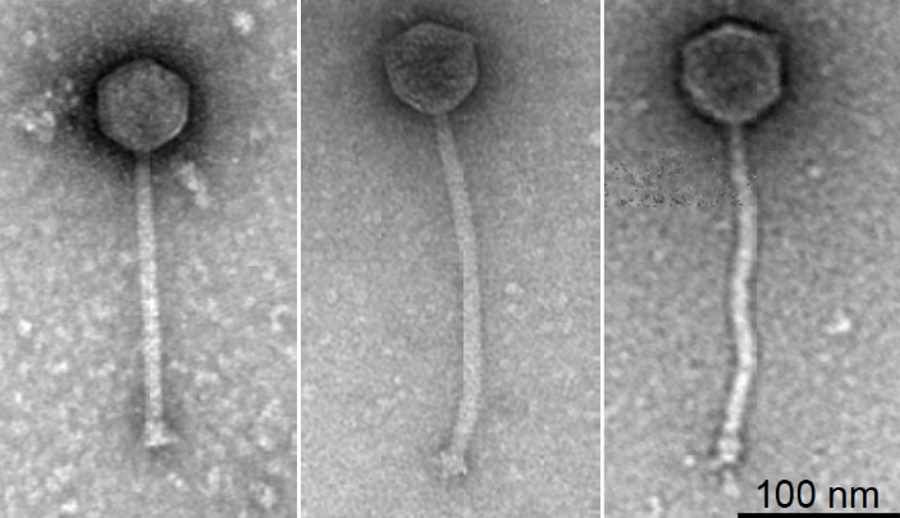
Experimental therapy with genetically modified viruses saved a teenage girl from death
Scientists, using an experimental therapy with genetically modified viruses, saved the life of a British teenager infected with superbugs. New therapy offers hope for alternative treatments for drug-resistant microbial infections.
Isabelle Carnell-Holdaway, now 17, has struggled with cystic fibrosis since childhood – a genetic disease that ra clogs the lungs with mucus and exposes patients to chronic infections. From the age of 8, she took antibiotics to somehow cope with stubborn battery strains.
Last year, a lung transplant became necessary. Wkr tce after the transplant, doctors noticed redness at the surgical wound site and signs of liver infection. Then they saw nodules on her arms, legs and buttocks. Infection spread and traditional antibiotics stopped working.
After a nine-month stay in the hospital, doctors gave her no chance at all. She was sent to a palliative care center. Then her mother suggested something unconventional: how about phage therapy? It was only after this that the cooperation was established I am working with an American laboratory to develop an experimental therapy.
Phage therapy is based on bacteriophages – viruses, which re attacking bacteria, but not moving the com eukaryotic recs, or m.in. com rek of humans. It was first used… 100 years ago to treat wasps b bacterial dysentery patients. After World War II, it was supplanted by antibiotics, although it continued to be used in the Soviet Union (later Russia) and Eastern Europe, successfully treating a whole range of bacterial infections. In Poland, since 1952, research on phage therapies has been conducted by the Phage Therapy Center at the Institute of Immunology and Experimental Therapy of the Polish Academy of Sciences im. Ludwik Hirszfeld University in Wroclaw.
Bacteriophages work by entering the com bacterial rkka, in which rej begin to replicate. A particular type of phage is capable of attacking only a few strains in bacteria from a particular species. Then they leave the com rka by the way destroying it. Thus b will multiply until the last com rk of the bacterial strain present in the body.
Scientists from the University of Pittsburgh prepared the experimental treatment. The university has the world’s largest collection of bacteriophages. Researchers led by microbiologist Graham Hatfull have identified dozens of phage in and have tested thousands of combinations of them in the lab to determine which re of them will be the most effective against the bacteria responsible for the teenager’s infection.
– I knew that this collection is of great importance when it comes to answering all kinds of questions in biology. But I didn’t think we’d ever get to the point where the rym we will use these phages therapeutically – admitted Hatfull.
Scientists have identified three types of phage. One, which re the researchers named Muddy, is derived from rotting eggplant and is a born bacteria killer. The other two, named ZoeJ and BP, needed more encouragement. They tended to coil and reach a peculiar state of inactivity after entering the cell Bacterial rk. In fact, it is the sleepy behavior of some rych phages is one of the problems associated with phage therapies. Many of these viruses are not deadly enough to be effective treatments for the.
That’s why researchers have used some genetic enhancements. They have removed the gene responsible for apathetic behavior from the ZoeJ and BP genes. This proved to be a hit. After this genetic modification, ZoeJ and BP were no longer so merciful to bacteria. They replicated rapidly until the cells burst rk of the host and then searched for a new com rki.
– Antibiotics are very effective, but they are a blunt tool, Hatfull said. – In the case of phage is the other end of the spectrum. They’re very specific, it’s a targeted, precise hit, it doesn’t affect the rest of the microbiome, and there’s little toxicity because the phages don’t infect human cells rek – added.
A cocktail of three phages prepared this way given to a dying teenager last June. Over the next six months, almost all nodules disappeared and the surgical wound closed. A liver test showed that the infection had essentially disappeared. In addition, the bacteria showed no signs of developing resistance to the phages.
This is the first paper, in kt rej has demonstrated the safe and effective use of modified bacteriophages on a Lida patient. Such treatments could offer a personalized approach to fighting drug-resistant bacteria. It could even potentially be used more widely to combat the disease b such as tuberculosis.
– This is truly a historic moment,” said Steffanie Strathdee, a phage expert from the University of California, San Diego. – This is the first time a genetically modified phage has been used to successfully treat a superbug infection in humans – added.
In the publication, which ra was published in „Nature Medicine”, The authors concluded that in the face of increasing antibiotic resistance, further research into phage therapies could save dozens of human lives. – Phage therapy appears to be the most promising alternative to antibiotics – assessed Strathdee.
Source background: Howard Hughes Medical Institute, Science Alert, photo. R. M. Dedrick et al./Nature Medicine. Pictured from left – Muddy, BP and ZoeJ


